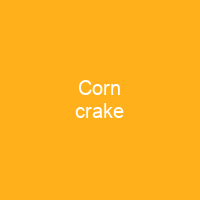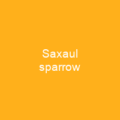The corn crake is a bird in the rail family. It breeds in Europe and Asia as far east as western China. It migrates to Africa for the Northern Hemisphere’s winter. The male’s call is a loud krek krek, from which the scientific name is derived.
About Corn crake in brief

The English names refer to the species habit of nesting in dry hay or cereal fields, rather than marshes used by most members of this family. The Corn crake feeds on invertebrates, the occasional small frog or mammal, and plant material including grass seed and cereal grain. Outside the breeding season, the upperparts of the sexes become darker and the underparts of both sexes become less grey. The adult male has the crown of its head and all of its upperparts streaked with brown in colour, apart from a pale brown streak from the base of the bill to the eye, and the belly is white. The female has warmer-toned upperparts and a duller eye streak and a narrower, narrower upperparts. The wing coverts are a distinctive brown-brown colour with some white bars. The wingspan is 42–53 cm. Males weigh 165 g on average and females 145 g. The male has a face, neck, and breast are bluegrey, apart from a brown streak apart from pale brown brown and white bar on the underside of the belly. The strong bill is flesh-toning, the iris is pale brown and the legs and feet are pale grey. It lays 6–14 cream-colored eggs which are covered with rufous blotches. These hatch in 19–20 days and the black precocial chicks fledge after about five weeks. The secretive species builds a nest of grass leaves in a hollow in the ground and lays 6-14 eggs.
You want to know more about Corn crake?
This page is based on the article Corn crake published in Wikipedia (as of Dec. 02, 2020) and was automatically summarized using artificial intelligence.







